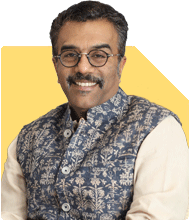Nayagam P P |6612 Answers |Ask -Follow
Career Counsellor - Answered on Jul 12, 2024
He started his career as an HR professional and has over 10 years of experience in tutoring and mentoring students from Classes 8 to 12, helping them choose the right stream, course and college/university.
He also counsels students on how to prepare for entrance exams for getting admission into reputed universities /colleges for their graduate/postgraduate courses.
He has guided both fresh graduates and experienced professionals on how to write a resume, how to prepare for job interviews and how to negotiate their salary when joining a new job.
Nayagam has published an eBook, Professional Resume Writing Without Googling.
He has a postgraduate degree in human resources from Bhartiya Vidya Bhavan, Delhi, a postgraduate diploma in labour law from Madras University, a postgraduate diploma in school counselling from Symbiosis, Pune, and a certification in child psychology from Counsel India.
He has also completed his master’s degree in career counselling from ICCC-Mindler and Counsel, India.
... more

महोदय, इस वर्ष बीएमएस कंप्यूटर विज्ञान में सीटें बढ़ाकर 900 कर दी गई हैं। तो क्या किसी विशेष शाखा में इतने अधिक छात्र होने से कोई समस्या होगी?
आप नीचे ऐसेही प्रश्न और उत्तर देखना पसंद कर सकते हैं
Dr Dipankar Dutta |1618 Answers |Ask -Follow
Tech Careers and Skill Development Expert - Answered on Jul 30, 2024
Chocko Valliappa |514 Answers |Ask -Follow
Tech Entrepreneur, Educationist - Answered on Aug 24, 2024
Dr Nagarajan J S K |1141 Answers |Ask -Follow
NEET, Medical, Pharmacy Careers - Answered on Jun 21, 2025
Dr Nagarajan J S K |1141 Answers |Ask -Follow
NEET, Medical, Pharmacy Careers - Answered on Jun 21, 2025
Dr Nagarajan J S K |1141 Answers |Ask -Follow
NEET, Medical, Pharmacy Careers - Answered on Jun 21, 2025
Chocko Valliappa |514 Answers |Ask -Follow
Tech Entrepreneur, Educationist - Answered on Jun 21, 2025
Chocko Valliappa |514 Answers |Ask -Follow
Tech Entrepreneur, Educationist - Answered on Jun 21, 2025
Chocko Valliappa |514 Answers |Ask -Follow
Tech Entrepreneur, Educationist - Answered on Jun 21, 2025
Chocko Valliappa |514 Answers |Ask -Follow
Tech Entrepreneur, Educationist - Answered on Jun 21, 2025
Chocko Valliappa |514 Answers |Ask -Follow
Tech Entrepreneur, Educationist - Answered on Jun 21, 2025
Chocko Valliappa |514 Answers |Ask -Follow
Tech Entrepreneur, Educationist - Answered on Jun 21, 2025
Chocko Valliappa |514 Answers |Ask -Follow
Tech Entrepreneur, Educationist - Answered on Jun 21, 2025



















